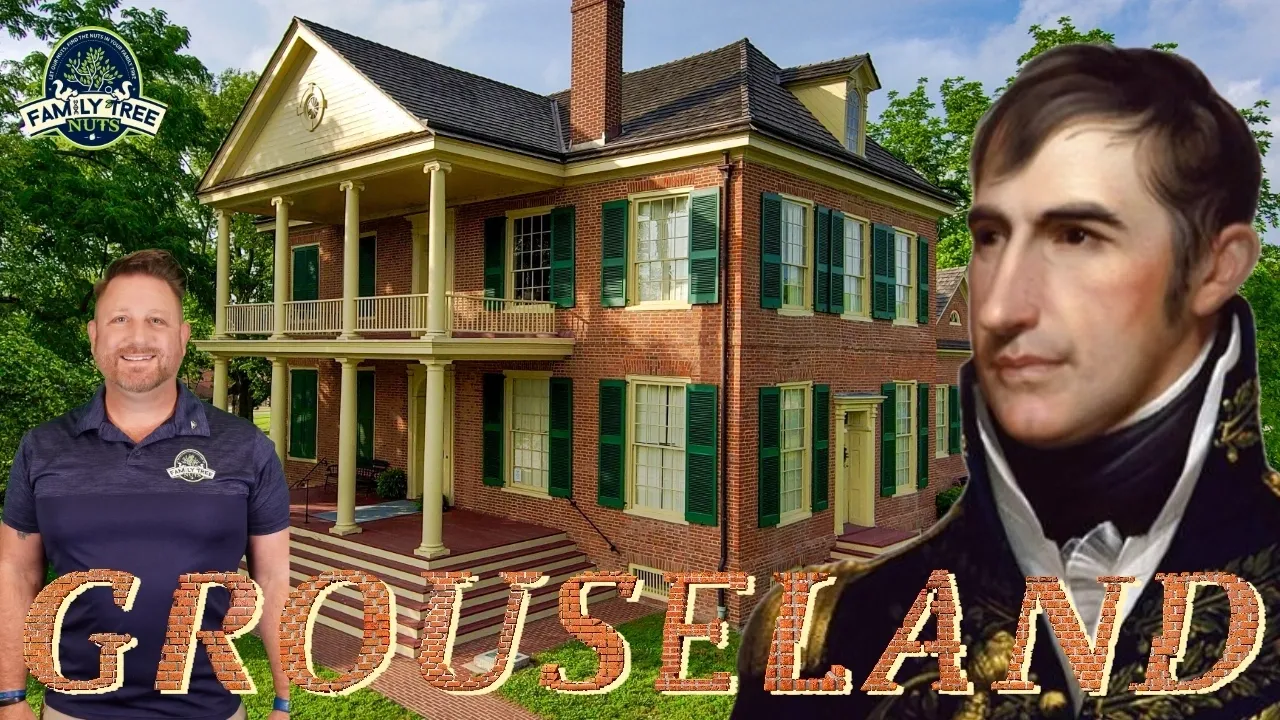
GROUSELAND: HOME OF PRESIDENT WILLIAM HENRY HARRISON
This mansion was built in the middle of the frontier and served as a symbol of power for the young United States. It doubled as a fortress due to the constant threat by those that wanted the new American pioneers out. It was the home of the Indiana Territory’s first governor, William Henry Harrison, the proven military leader, and eventual president of the United States. I’m going to take you on a tour of “Grouseland” and tell you about some of its rich history.

Recently we visited Gouseland and were blown away by learning all that happened here, and I wanted to share the history with all of you. At Family Tree Nuts, we build family trees for clients that either don’t know how, don’t have the time, or don’t want to pay those expensive membership fees. We also make history videos all over the United States, and a few countries, so check out our YouTube Channel!
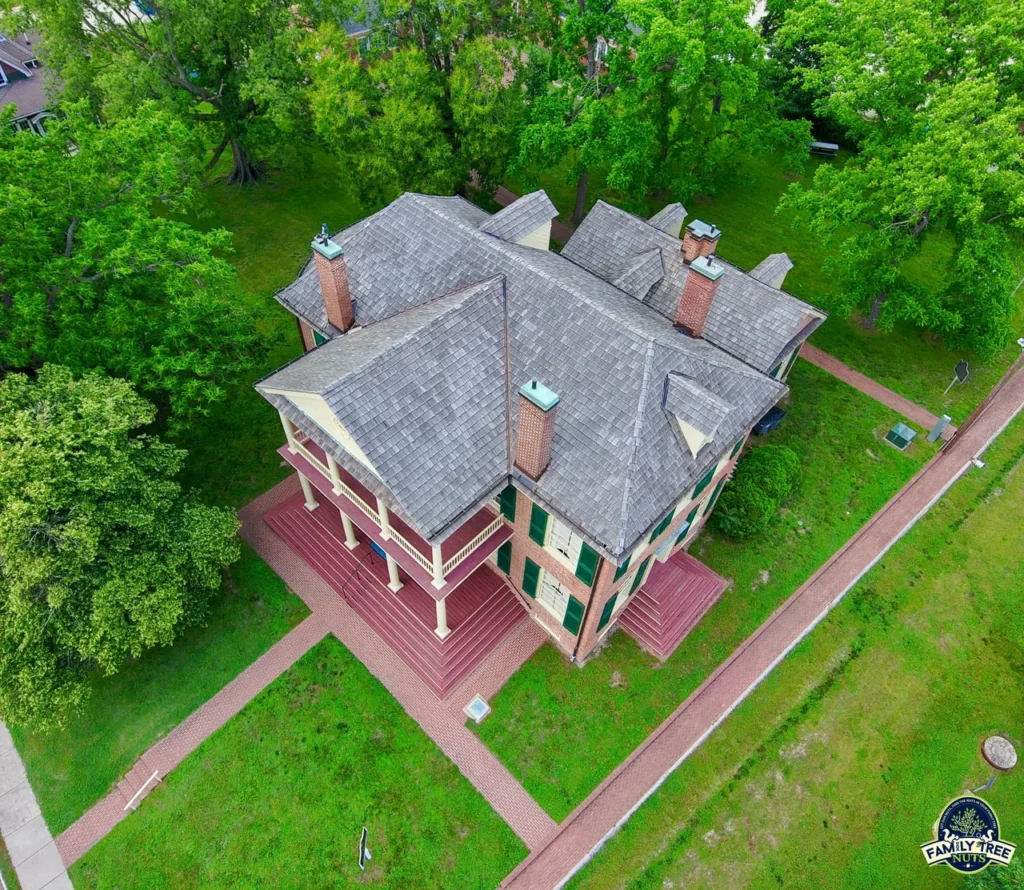
William Henry Harrison assumed his position as the first Indiana Territorial Governor on 10 January 1801, and soon after began plans to build his home Grouseland. The home was built between 1802 and 1804, on the banks of the important Wabash River, on Harrison’s three hundred acres of land, in Vincennes, Indiana. So, why the name Grouseland? It is said that the area was loaded with the small game bird, and they were his favorite thing to eat. Harrison lived here from 1804 until 1812.
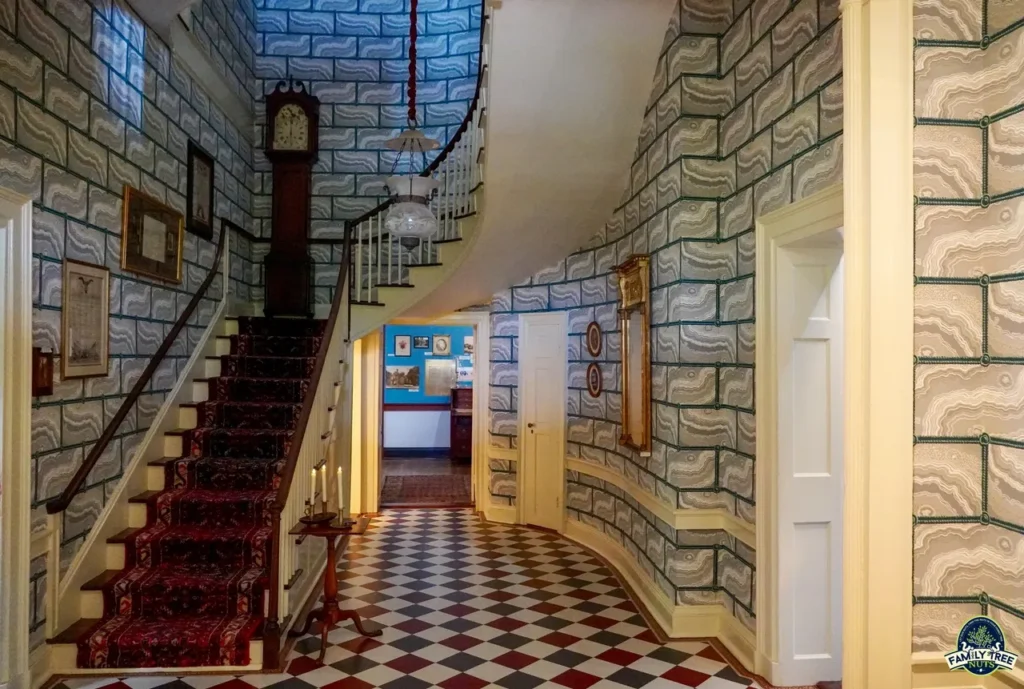
The home is a federal style mansion based on homes in Philadelphia, and homes that Harrison was familiar with in his native Virginia. It is the first brick home in Indiana, and cost Harrison about $20,000 to build, which is about half a million dollars today. The house was like none other in the area, it was in the middle of the frontier, and it is said that Harrison built such a fine home to gain the respect that he needed as governor because he was only 27 years old. Now let’s go take a tour of the inside.
On the first floor the house has a large foyer and staircase, said to be modeled after George Washington’s home Mt. Vernon. Also found on the first floor is the parlor, which served as the council chamber to meet with important figures and conduct business, a large dining room, library, and nursery. Two original portraits of Harrison are found here.
The second floor has six bedrooms that were often occupied by guests on official business. The rooms are filled with period furniture, including many pieces that were owned by the Harrison’s, and many historical items related to the future president. The back bedrooms have cracks in the wall near the ceiling that are said to have occurred during “Tecumseh’s Earthquakes”, or the New Madrid Earthquakes that took place in December 1811, and January and February 1812. Tecumseh had spoken of a sign that would come that would announce that the time to unite and rise up against the whites had come. To thousands of Indians, these earthquakes were that sign. Most structures in the area were demolished during this time but Grouseland stood making it a symbol of power and strength for all to see.
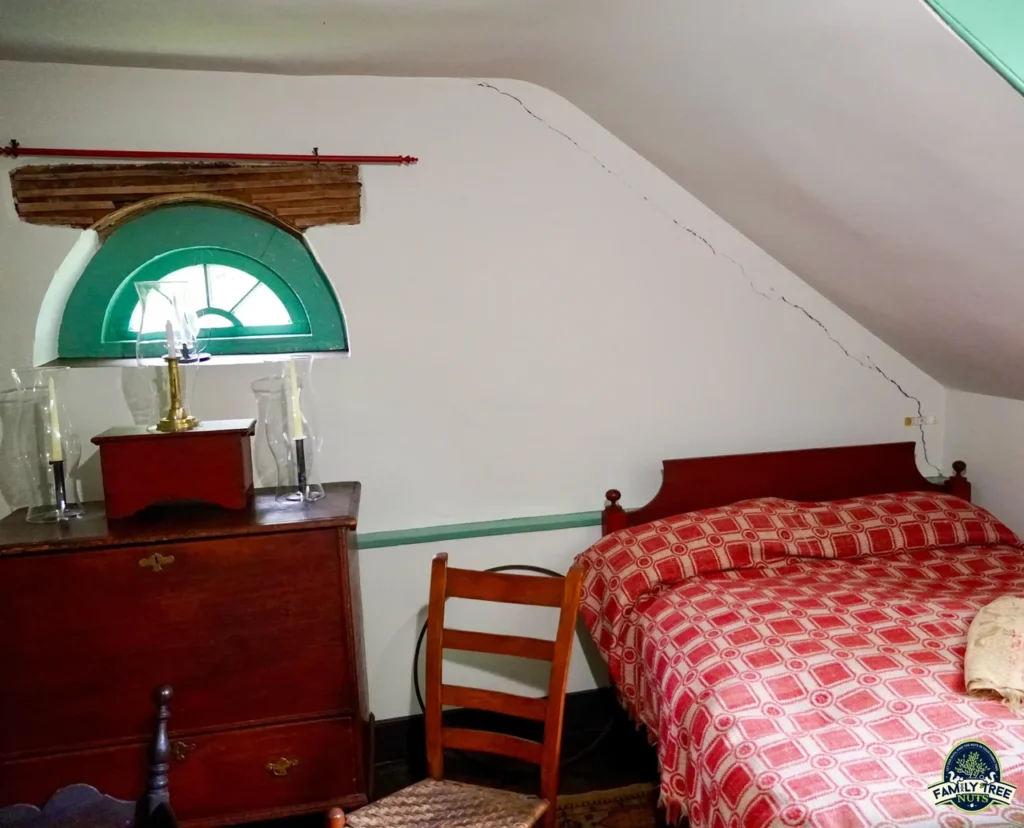
The basement is tall enough to stand up in and is the size of the upstairs rooms. Most of the area was used for storage and servants living areas, but for a time, Harrison’s wife, Anna Symmes-Harrison ran a school here. Throughout the home, and especially in the basement, visitors can see several oddities relating to the home. A special collection of items belonging to Francis Vigo, the Patriot Spy are also on display. Like I mentioned earlier, the home is also a fortress. Under the front porch is a storage area that is also a magazine. A well for fresh water is in the basement, and it has a reverse well for sewage. The basement has firing slots in the windows, and an observation hatch is in the roof.

During his time at Grouseland, Harrison met many important leaders at his home, several of whom stayed for a time as guests, including Aaron Burr, and Lewis and Clark. Harrison also met with important Indian leaders here, and five land treaties were signed with them. In 1805, Harrison negotiated the Treaty of Grouseland with Chiefs Little Turtle and Buckongahelas. This treaty seeded a large section of land to the United States.
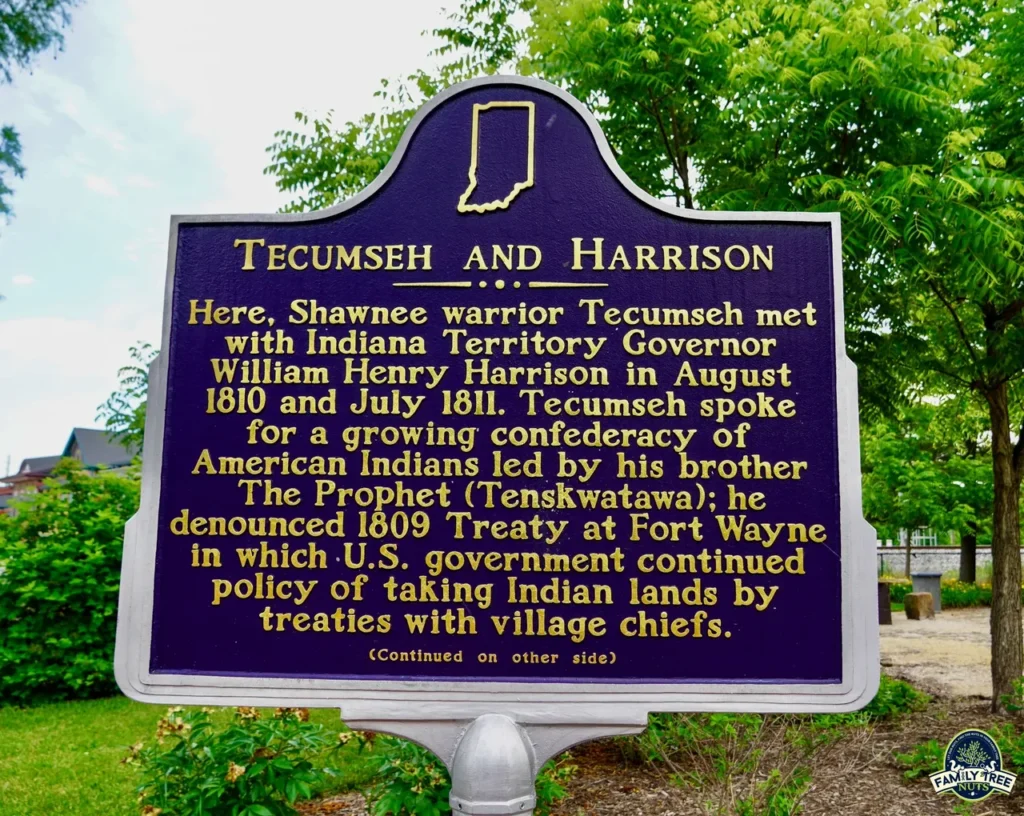
In August of 1810, and July 1811, Harrison met with the most famous Shawnee, Chief Tecumseh and hundreds of his braves on the front lawn of Grouseland. They could not come to an agreement and Tecumseh informed Harrison that he would fight to keep out any further white settlement in the area. Soon after the second visit, while Tecumseh was away recruiting more tribes to join his confederation, Harrison was able to provoke Tecumseh’s brother, Tenskwatawa, also known as The Prophet, into battle, and defeated him at Tippecanoe. This ended Tecumseh’s hopes of a United Indian Nation. In 1813, Harrison led troops at The Battle of the Thames where Tecumseh was killed.
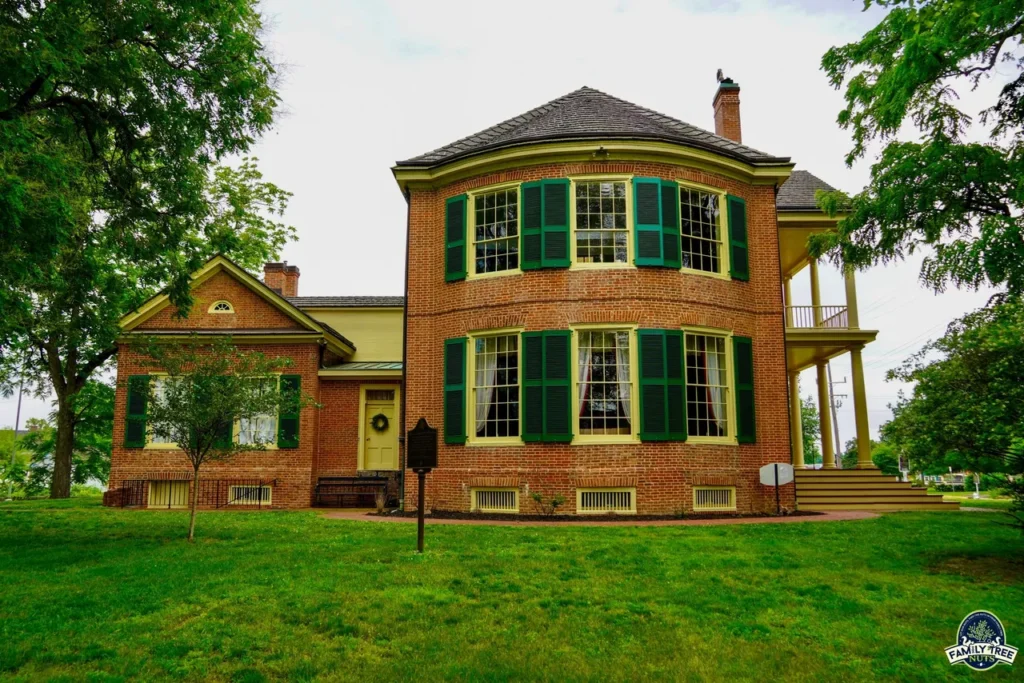
Harrison left Grouseland in 1812, and moved his family to North Bend, Ohio, near Cincinnati. Here he served in the Ohio Senate, U.S. House of Representatives, U.S. Senate, Minister to Columbia, and in 1840 was elected as the 9th President of the United States. He is known for his presidential campaign slogan “Tippecanoe and Tyler Too”, that reflected his success in defeating The Prophet, thus ending the threat of an Indian Confederation. Harrison was president for only thirty-one days before he died, but that is another story for a different video.
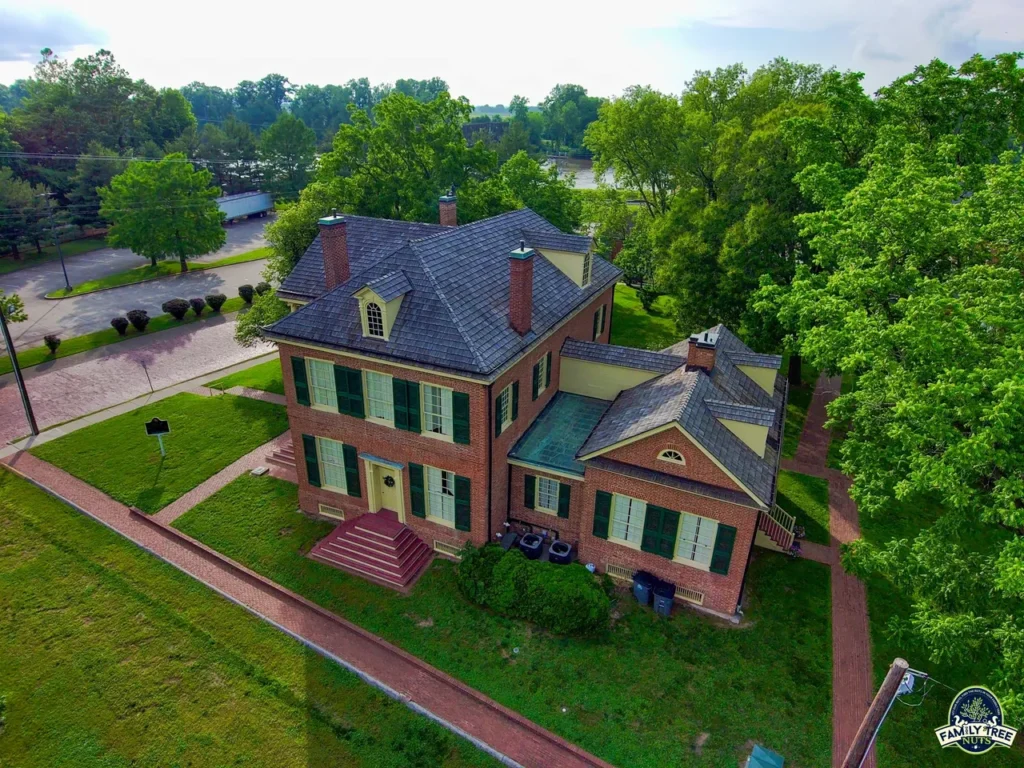
The home stayed in the family until 1850, and from there it fell from prominence, and was used as a hotel, a library, and even a grain warehouse. In 1909, The Vincennes Water Company bought the land that Grouseland sits on, and plans were made to demolish the home. The Francis Vigo chapter of the Daughters of the American Revolution raised funds and restored the home, and it opened as a museum in 1911. The home was listed on the National Historic Landmark, in 1960, and National Registry of Historical Places, in 1966. Other historic buildings have been moved to the property, including the Indiana Territory Capitol building known as the “Red House”.
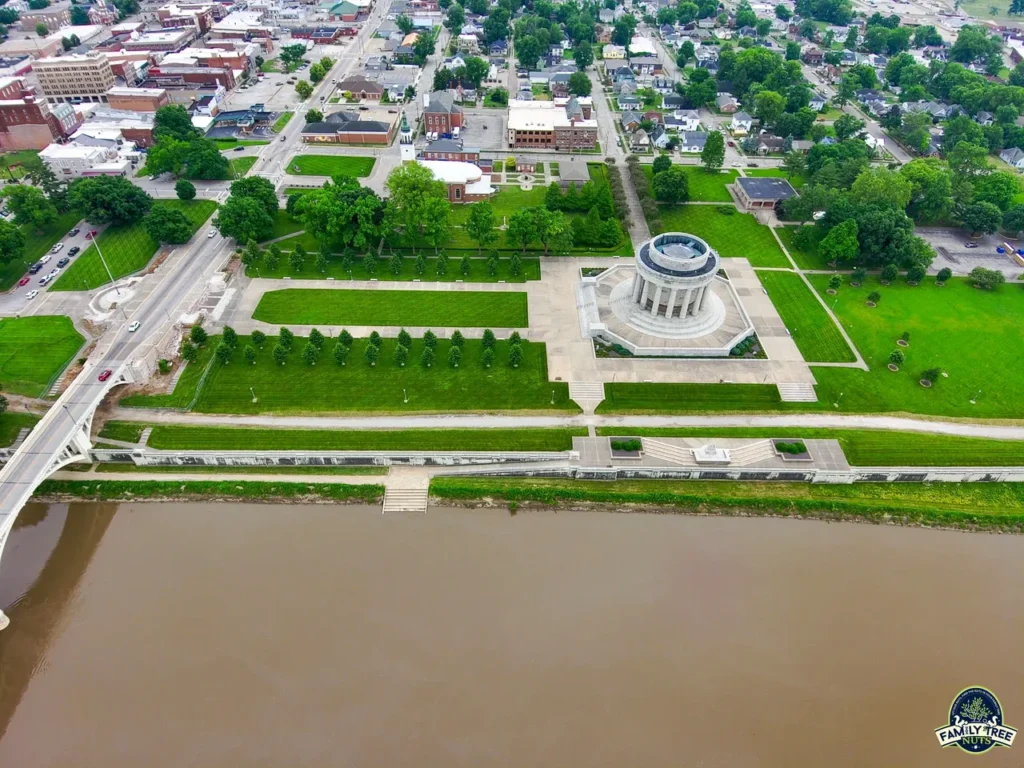
Also, while you are in Vincennes, be sure to visit the other historical locations that it has to offer. The city has many original historical buildings that are still standing and are museums themselves. Downtown is home to many historical markers and statues that tell the story of Vincennes, going back to 1732, you heard that right, 1732! Just outside of town is the site of Fort Knox II, the muster location before the Battle of Tippecanoe. Be sure to check out the Indiana Military Museum. Lastly, don’t miss my favorite spot in the area, the George Rogers Clark Memorial National Park. GRC was called “The Conqueror of the Old Northwest”, but sadly is said by many to be the most forgotten hero in American history, and definitely one of my favorite characters. Be sure to see our video from Grouseland at the link below.
-Colonel Russ Carson, Jr., Founder, Family Tree Nuts
[email protected] www.familytreenuts.com
